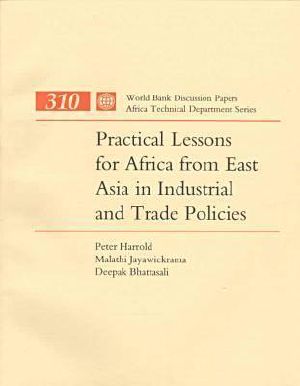Practical Lessons for Africa From East Asia in Industrial and Trade Policies

- Authors
- Harrold, Peter & Bhattasali, Deepak
- Publisher
- World Bank Publications
- Tags
- test
- ISBN
- 9780821334843
- Date
- 1996-01-01T00:00:00+00:00
- Size
- 0.60 MB
- Lang
- en
This paper examines the economic performance of East and Southeast Asia and sub-Saharan Africa, and attempts to identify some of the practical lessons that Africa can learn from Asia, in order to facilitate industrial development and export growth. Africa ' s factor endowments and economic structures are quite similar to those found in Southeast Asia in the 1960s. The Southeast Asian countries - Indonesia, Malaysia and Thailand - have achieved rapid industrial growth over the past 3 decades, while Africa has struggled with adjustment, and witnessed a marginal industrial response. The emergence of a significant gap in per capita incomes between these two groups of countries, however, is a relatively new phenomenon. This suggests hope for Africa, if an appropriate policy environment can be sustained over a period of years. In this paper, 3 country comparisons, of Nigeria and Indonesia, Cote d ' Ivoire and Malaysia, and Tanzania, Ghana and Thailand, illustrate the critical nature of government policies, such as exchange rate policy and the role assigned to the agricultural sector. Southeast Asia, in addition to maintaining the " basics " of macroeconomic stability, high savings, and investment in human capital, used several complementary measures to place the development of exports as the central economic strategy. A key conclusion of this study is that correct use of the exchange to maintain export competitiveness was of fundamental importance in East and Southeast Asia. The paper also suggests six elements that should be pursued in industrial lending: the development of training financing mechanisms; technical assistance programs for enterprises; the development of simple duty exemptionschemes; export credit support mechanisms; public-private training institutions; and the development of industrial/export processing zones. While many of these have been tried in the past in Africa, this review suggests ways in which their design could be improved, or where necessary accompanying policies were missing. As African governments become more committed to development, and to developing the sort of long-term vision for their economies that was so crucial in East Asia, these sort of policies could have a key role to play in Africa.